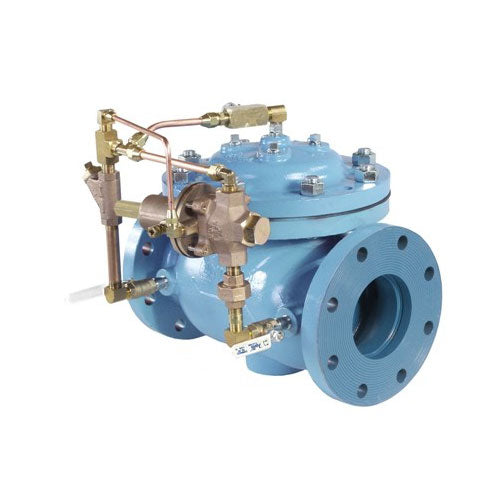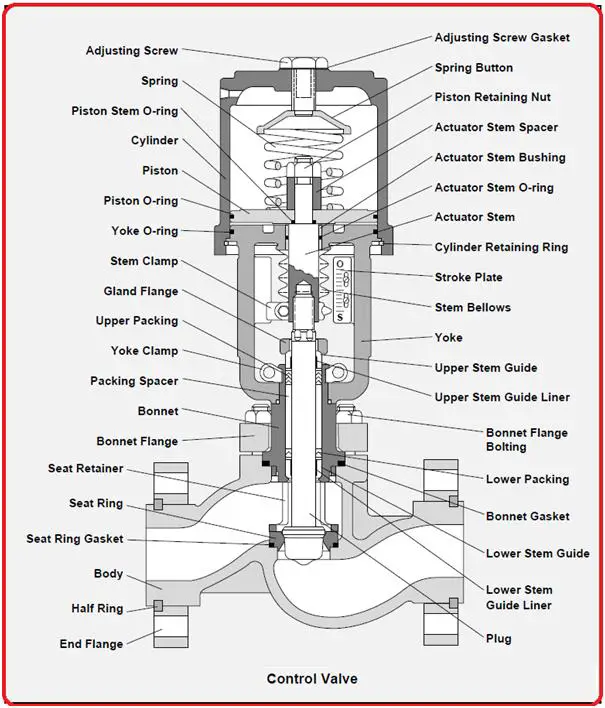Enhancing Operational Effectiveness with Advanced Control Valves
Enhancing Operational Effectiveness with Advanced Control Valves
Blog Article

Maximize Power Cost Savings and Convenience With Advanced Building Automation Controls
In the world of modern architecture and center monitoring, the assimilation of innovative structure automation regulates stands as a pivotal innovation. The merging of technology and sustainability has birthed a brand-new era where power efficiency, convenience optimization, and operational streamlining are no much longer possible facts yet far-off goals. By using the power of automation, structures can adapt, react, and progress in methods that were as soon as unbelievable. The capacity for considerable power cost savings and boosted convenience is not simply an assurance but a possibility waiting to be satisfied. This standard change in building management holds the key to opening a globe where ecological conscientiousness and passenger wellness sympathetically coexist within the walls of our frameworks.
Energy Effectiveness Advantages
Power performance benefits can substantially minimize power intake and functional expenses in buildings. By implementing energy-efficient methods and modern technologies, structure owners and drivers can accomplish substantial savings while additionally adding to ecological sustainability. Among the key advantages of improving energy effectiveness in structures is the reduction of energy costs. Energy-efficient systems, such as sophisticated building automation controls, can optimize making use of sources like cooling, heating, and lighting, bring about lower energy expenses over time.
Moreover, enhanced power performance can prolong the lifespan of structure equipment and systems. By operating more successfully, a/c systems, lighting components, and various other structure parts experience less wear and tear, causing minimized maintenance and substitute prices. Furthermore, energy-efficient structures often regulate greater residential property worths and rental prices, offering long-term economic benefits to owners.
Furthermore, power efficiency can boost owner convenience and efficiency. Effectively regulated indoor environments with optimum lights and thermal problems create a more pleasant and favorable office, causing enhanced staff member contentment and efficiency. In general, the energy performance advantages linked with advanced building automation controls are complex, incorporating price financial savings, environmental stewardship, and occupant well-being.
Improved Convenience Control
Enhancing convenience control in structure settings needs a sophisticated integration of innovative automation systems for optimal owner wellness. By using advanced building automation controls, facilities can tailor the interior atmosphere to satisfy the details needs and choices of residents. These systems enable exact law of ventilation, temperature, and illumination, creating a comfortable and efficient environment. Occupant fulfillment and productivity are closely connected to thermal comfort, making it important to have systems in place that can adjust to altering problems in real-time.
By integrating these sophisticated controls, structures can not just boost convenience yet additionally enhance energy efficiency by optimizing system operations based on real occupancy and usage patterns. Eventually, prioritizing passenger comfort via advanced automation systems leads to a much more delightful and healthier indoor setting.
Operational Efficiency Improvements

Furthermore, the implementation of real-time tracking and analytics devices enables structure operators to determine power inadequacies and functional anomalies promptly. By constantly keeping track of energy usage patterns and system efficiency metrics, changes can be made more information in real-time to enhance power usage and make sure peak functional effectiveness. control valves. Furthermore, including demand feedback strategies right into building automation controls can additionally improve operational performance by dynamically changing power use based upon grid problems and rates signals
Indoor Climate Optimization
Effective indoor climate optimization is a basic facet of structure automation controls, ensuring occupants' comfort and well-being while optimizing power savings. By making use of sophisticated sensors and controls, constructing automation systems can continually change and check temperature, moisture levels, air top quality, and ventilation to create an optimum interior environment. Preserving comfy and regular problems not just boosts owner complete satisfaction however likewise enhances efficiency and total well-being.
Indoor climate optimization likewise plays a vital function in power performance. By fine-tuning home heating, air conditioning, and air flow systems based upon real-time data and occupancy patterns, developing automation controls can considerably decrease power usage - control valves. Executing approaches such as demand-controlled ventilation and thermal zoning can help decrease power waste while ensuring that each area of the structure obtains the essential conditioning.

Sustainable Setting Production
Building automation manages not just maximize indoor climate conditions for power performance and resident convenience yet likewise lay the structure for producing a sustainable environment through critical administration of systems and sources. By integrating innovative building automation modern technologies, such as sensing units, actuators, and intelligent software program, centers can change and keep an eye on power usage in real-time to minimize waste and decrease their carbon footprint. These systems allow predictive maintenance, recognizing potential concerns prior to they escalate and enhancing devices performance to boost durability and effectiveness.
Moreover, sustainable atmosphere creation prolongs past power administration to include water conservation, waste decrease, and interior air look at this web-site top quality enhancement. Building automation controls can regulate water usage, spot leaks, and guarantee appropriate waste disposal methods, adding to total sustainability efforts. In addition, by controlling and checking air flow and filtering systems, these modern technologies boost passenger health and wellness and productivity while reducing power usage connected with cooling and heating operations.
Final Thought
To conclude, progressed structure automation manages deal considerable benefits in terms of power cost savings, comfort control, functional effectiveness, interior environment optimization, address and producing a sustainable setting. By executing these controls, buildings can accomplish optimum performance while decreasing power usage and boosting passenger convenience. It is evident that the use of sophisticated automation modern technology is vital in improving building efficiency and creating a more sustainable future.
Power effectiveness advantages can significantly lower power intake and functional costs in buildings. On the whole, the power performance benefits linked with advanced building automation controls are complex, including expense savings, environmental stewardship, and resident well-being.
Furthermore, integrating need reaction methods right into building automation controls can better boost functional effectiveness by dynamically adjusting energy usage based on grid problems and prices signals.
Building automation manages not just maximize indoor environment problems for power efficiency and resident comfort however additionally lay the foundation for creating a lasting setting via strategic monitoring of sources and systems.In verdict, progressed building automation regulates offer considerable benefits in terms of energy savings, convenience control, functional effectiveness, interior climate optimization, and producing a sustainable atmosphere.
Report this page